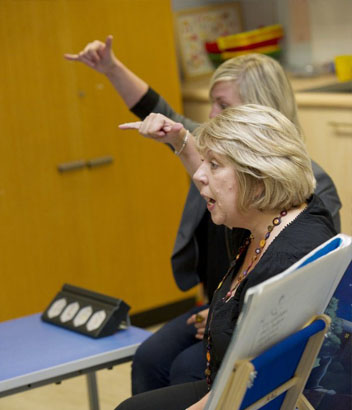
This resource encourages us to consider the contribution that school based staff can make to the diagnosis of mental health difficulties in young people.
Vitally, school based staff can only make a valid contribution to the process when multidisciplinary
working is effective.

For effective service delivery, it is essential that a full multidisciplinary team is in place and is operating appropriately.
There should be clear boundaries and clear levels of communication across all disciplines,
with good leadership.
Despite the increased interest in this field, relatively few well designed studies are available on the prevalence of mental health difficulties in the population.
People with intellectual disability have been the focus of recent major national policy developments...but
with little research evidence to inform these developments.
Cooper, 2007
In recent years, there has been a shift in our thinking from the purely biological paradigm (disease model of understanding) to a more bio-psycho-social paradigm (IASSID; MH-SIRG).
Take a look at the following diagram to get a better understanding of the biological, developmental, psychological and social interrelationships.

High Risk
Biological
Developmental
Psychological
Social
Different genetic syndromes, Impariment of brain function, Physical Illnesses, Susceptibility to mental illness, Severe
and complex epilepsy, Sensory and
physical impairments
Psychological, sexual and physical abuse, Lack of meaningful oportunities, Negative life experiences, No engagement in
day to day activities, Denial of individual needs, Atmosphere of blame, High levels of cerer stress, Gender, race, ethnic
and
other discrimination
Cognitive strengths and weaknesses, Other neuropsychological impairments, Reinforcement of maladaptive behaviours, Impaired language development, Poor self-esteem, Peceived lack of emotional support, Impact of adverse life events

Read the following case study on Brian and answer the questions at the foot of the document.
Many of the questions are for members of the multidisciplinary team – however, teachers are an essential part of this team.
Discuss the role of the teacher in this process with your colleagues.